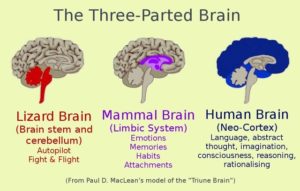Why I Haven’t Retired: It’s Hard to Explain…

When I complain about how much work I have to do, K says, “Well then, quit.”
I say, “I can’t quit.”
She says, “Of course you can. You could have retired 40 years ago.”
Then I say, “I don’t want to quit.”
Then she says, “Well then, stop complaining!”
She has a point. But when it comes to these later years of working, I want my cake and I want to eat it. I want to keep working and, when work is hard, I want to complain about it.
How to explain?
I want to keep working because I value the work I’m doing. I think – I know – that it’s useful. To some, I believe it is important. It also gives me a great deal of satisfaction. But it’s difficult. And time consuming. And sometimes downright upsetting.
Work is not play.
Play is fun. And I have playtime. I have my grappling, my crossword puzzles, my computer chess, and my cigar smoking. Two hours of that sort of fun per day fills my play tank. My work tank is bigger. Much bigger. But it’s also, despite the stress and toil, more satisfying.
But K is right. I choose to work. And so, I must also choose to accept all that comes with it and stop bitching.
Marketing Mastery Series
Labels, Lizards, and Limbic Systems:
Understanding the Buyer Brain

They say you shouldn’t judge a book by its cover. And that’s generally good advice. But most people do. Including me. We respond instinctively and emotionally to everything our senses encounter (and particularly to new sensations) because our brains are wired to do so.
There are three forms of natural intelligence and three intelligence systems in the human brain. The reptilian – or lizard – brain, the limbic brain, and the neocortical brain. Only one of them – the neocortical brain – is capable of not judging a book by its cover. The other two handle the other two forms of intelligence: instinct (the lizard brain) and feeling (the limbic brain).
Because Homo sapiens are naturally conceited, we tend to downplay the importance of our natural intelligence systems – instinct and feeling – and overplay the importance of what is unique to us – thinking. We shouldn’t. They are equally important. (One could argue, in fact, that, next to the opposable thumb, the development of the two “lower” levels of intelligence is the reason our species survived the early eons of evolution.)
Our decisions – big and small – are initiated in the limbic brain. Some, like pulling one’s hand from a hot stove, start and end there. Some, like falling in love, begin in the lizard brain, but grow and flourish in the limbic. And some, like the decision to buy a new car, are routed from the lizard brain to the limbic and then to the neocortical, where the decision is actually made.
None take place solely in the emotional or the rational brain. They all start with that first instinctive reaction.
Most people understand this at some unconscious or rudimentary level. And some people that study decision making understand it quite well. In the world of marketing, understanding how decisions are made is essential. Yet most of what I’ve read and heard from so-called marketing experts is flawed in this respect. They view the buying decision as a two-part process.
General (brand) advertisers see it as instinct and then emotion. Direct response advertisers see it as emotion and rationalization.
But if you want to be a master marketer, you have to understand that the buying decision is always a three-part process. And that means the selling strategy should be a three-part process, too.
First, is the lizard reaction, which takes less than a second. Second, is the emotional impulse, which can take place in several minutes to as long as an hour. Third is the rationalization, which has no time limit. It can take minutes. Or hours. Or days. Or months. Even years.
To repeat…
* The lizard reaction: This is the first instinctive signal that flashes through the prospective buyer’s brain when he/she first looks at the advertising.
* The emotional impulse: The limbic brain then moves in (tentatively or eagerly) to form an emotion.
* The rationalization: After the emotion is formed, the rational brain kicks in and does its work.
Important: These three brain functions – the reptilian reaction, the limbic impulse, and the rationalization – always occur in that order.
What does this mean to you, the aspiring marketing master?
- Recognize that any marketing/selling strategy that consists of only two parts is incomplete.
- If you are in general advertising, your expertise is in understanding instinct and emotion. To become a master in your universe, you must master rationalization. You must figure out how to assure that the-post-instinct, post-emotion desire to buy is not impeded by anything that happens before, during, or after the buying experience.
- If you’re in direct marketing, your expertise is in understanding emotion and rationalization. To become a master of your universe, you must master instinct. You must become expert at designing that initial instinct.
Do you see what I’m saying here? This feels like an important insight to me. I’m not sure, though, if I’ve explained it well. Let me know if you grok this. If not, I’ll dig into it again in another issue.
News & Views
COVID Update 1: Lockdown Scorecard
If you don’t want to believe it, this probably won’t change your mind. But a major study has just been published that concludes that the COVID lockdown had “little to no effect” on saving lives during the pandemic, but had “enormous economic and social costs where [the restrictions were] adopted.”
You can read the entire 69-page report here.
Or a summary of it here.
COVID Update 2: The Pandemic of the Unvaccinated
When Omicron was classified as a “Variant of Concern” by the WHO in November, just about everyone in the pro-vaccination community, from President Biden to Nancy Pelosi to Rachel Maddow to Howard Stern, began calling COVID a “pandemic of the unvaccinated.”
I thought that was a catchy phrase. But I was sort of appalled by the vitriolic sentiment that went along with it. (Howard Stern, for example, suggested that hospitals should not admit unvaccinated people.)
Since then, we’ve learned that vaccinations were not – and are not – able to provide immunity against or stop the spread of the virus. Latest fact I could find: Of the 77 million people that have been infected by the Omicron strain of COVID-19, only 11% (or 8 million) of them were not vaccinated. In other words, For the other 69 million, vaccinations didn’t stop the spread.
Complicated: College Discrimination Suit

The US Supreme Court is going to hear arguments about the role of race in the college admission process.
The Students for Fair Admissions claims that both Harvard, a private school, and the University of North Carolina, a public school, have been illegally restricting admissions for Asian-American applicants. (Harvard’s policies will be tested against the Civil Rights Act; UNC’s against the 14th Amendment.)
This is not news. Asian-American parents and educators have been objecting to these policies for decades. (How the issue finally made its way to the Supreme Court is a story for another day.)
It should be an interesting case. If the suit succeeds, it could put an end to all quota systems, including affirmative action admissions.
What I Believe: I believe that affirmative action – at some level and in some cases – is a natural and useful idea. But I also believe that it is ineluctably discriminatory. When the average GPAs and test scores of one racial community are disproportionately lower than those of another, the only way to admit more of the lower-performing group is to discriminate against the higher-performing group.
The arithmetic here is irrefutable, but there is an out that the Supreme Court can take if it wishes. And that is to say that objective measurements of performance (GPAs, testing, and even extra-curricular activities) are only part of what should be considered in making admission decisions. Subjective criteria (such as personality) are important, too. And this, in fact, is what Harvard and UNC do. Of course, the only way to logically employ this argument is to suggest that Asians have “less attractive” personalities.
Good to Know
About the Vietnam War

The war in Vietnam began in 1955. The US got involved in 1965. I don’t remember knowing anything about it until I entered high school, in 1964. Opposition to the war was a fringe issue then. But by 1968, negotiations to end the war officially began. Protests continued until 1973, when the governments of Vietnam and the United States signed the Paris Peace Accords. The agreement required the immediate withdrawal of all US troops, the return of prisoners of war, and the reunification of Vietnam through peaceful means. By that time, more than 1.3 million soldiers and civilians had been killed. Yet after US forces were removed from the conflict, the warring factions in Vietnam resumed fighting. Two years later, North Vietnam captured Saigon, the capital city of South Vietnam, and began reunification of the country under socialist rule, officially bringing an end to the Vietnam War.
Recommended Places
The Romance and Magic of Cartagena

Founded in 1533, Cartagena is a port city on Colombia’s Caribbean coast. It’s a short plane ride from Miami. Because of its beauty, history, and location, it’s one of the most visited cities in South America.
What I like about Cartagena:
* The architecture. Cartagena may be the most beautifully preserved Spanish Colonial city I’ve ever seen.
* The street art – murals, sculpture, and graffiti – in the Getsemani neighborhood.
* At night, the city is saturated with music and dancing – in clubs and outdoors in parks.
* It is an oasis for foodies, from street tapas to fine dining.
* Lots of interesting churches and monasteries throughout the city, including the San Pedro Claver Monastery.
Arts & Letters
From Letters of Note: Ralph Waldo Emerson to his daughter, April 8, 1854
“Finish every day and be done with it. For manners and for wise living it is a vice to remember. You have done what you could; some blunders and absurdities no doubt crept in; forget them as soon as you can. To-morrow is a new day; you shall begin it well and serenely, and with too high a spirit to be cumbered with your old nonsense. This day for all that is good and fair. It is too dear, with its hopes and invitations, to waste a moment on the rotten yesterdays.”
Words to the Wise
* A word I’d like to bring back into common parlance: ken
Rarely used today outside of the phrase “beyond one’s ken,” it means “range of vision or comprehension.” It goes all the way back to Proto-Indo-European, the ancestor of most European, Near Eastern, and South Asian languages. Its many relatives in modern English – all coming from the root “gno-” (“to know”) – include incognito, cunning, and know itself.
* A word I should know but don’t: scofflaw
A scofflaw is a person who habitually violates the law, especially laws that are difficult to enforce. Example: “A scofflaw seeks not to overturn the existing system – it may in fact be to his advantage if everyone else were to conform to it – but to flout it.” (God, Belief, and Perplexity by William E. Mann)
* A word I’m going to try to wedge into the next conversation I have about space: spaghettification
Spaghettification – also known as the “noodle effect” – is the theoretical vertical stretching of an object as it encounters extreme differences in gravitational forces, especially those associated with a black hole.
Readers Write
Re Ready, Fire, Aim:
“Ready, Fire, Aim is vintage Michael Masterson. Every sentence in the book is stuff you can use right now, today, to accelerate your climb to the top of the financial ladder. What sets Masterson apart from most of the gurus who write about how to do it is that he’s actually done it – over… and over… and over again. The number of successful businesses he’s built is no less than astonishing. Every serious entrepreneur needs to avail himself of the information in this book.” – RR
Re my prediction in the Feb. 3 issue that the digital dollar will eventually take over, at which point the government (and big tech) would have full financial control of US citizens:
“I wouldn’t have thought of this as an outcome/goal of the gov/big tech back in 2019, but after living through the past 2 years, I have no doubt you are spot on.” – DA
 MarkFord
MarkFord